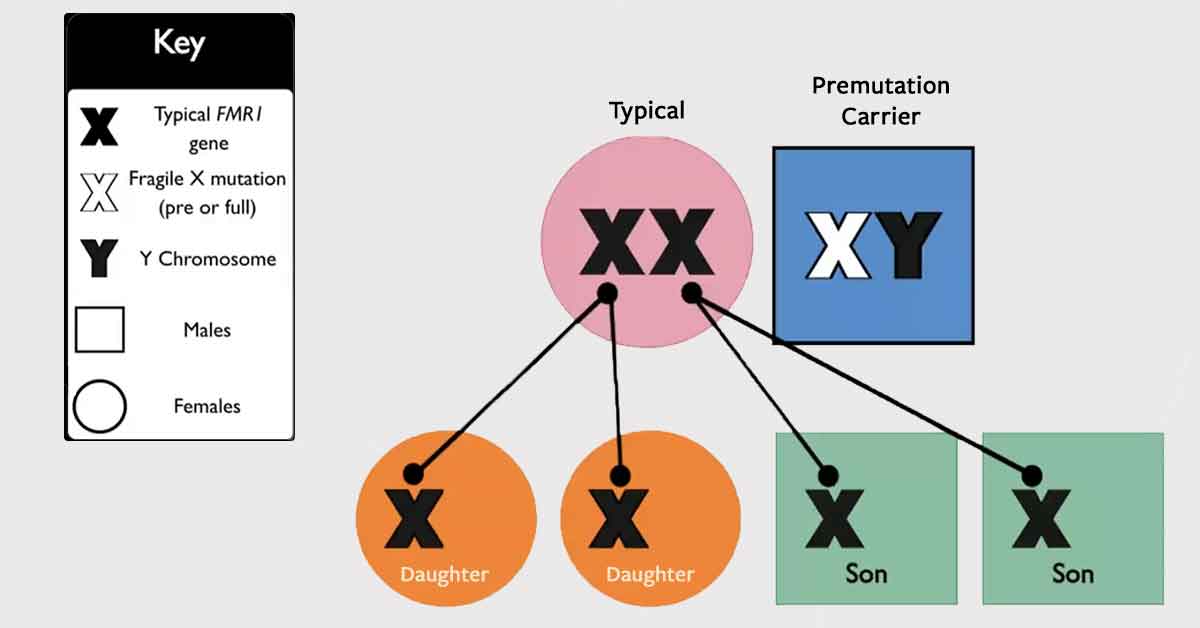The NFXF’s FORWARD study created the largest database of information on Fragile X syndrome (FXS) in the United States. 25 peer-reviewed journal publications have resulted from FORWARD data, and many more papers are being developed.
During this 45-minute Lunch & Learn webinar, Dr. Elizabeth Berry-Kravis and Dr. Walter Kaufmann presented on the following two “most-cited” publications and answered questions during a moderated Q&A:
Discussion #1: Mosaicism Type and Cognitive & Behavioral Functioning Among Males with FXS
Dr. Elizabeth Berry-Kravis kicked off this webinar by presenting on the publication Mosaicism Type and Cognitive & Behavioral Functioning Among Males with FXS.
Below are a few topics and take-aways discussed during the webinar.

This study looked at mosaicism, which means an individual has several types of FX variations in different cells within their body. More over, this means that some cells actually produce FMRP.
Most males with FXS make very little or no amount of FMRP, a protein that is important for brain development.
- This happens because the gene that makes this protein has been “turned off” in all of the cells in their body by a process called methylation.
- However, some males with FXS have what is called “methylation mosaicism” which means that some, though not all, of their cells have a gene that has not been turned off by methylation and can still make FMRP.
This study only looked at males with FXS. The reason for this is because females have two X chromosomes, making data analysis more challenging.
Types of mosaicism:
- Methylation mosaicism: FMRP production is “kind of shut down, but not fully shut down” so, cells don’t make as much FMRP as “normal” cells.
- Size mosaicism: some neurons with normal FMRP levels, most neurons with no FMRP

In this study, participants with methylation mosaicism tended to have less severe intellectual disability and better social and functional skills.
Methylation mosaicism was not associated with behavior or ASD diagnosis
Data analysis supports the theory that a little FMRP in a high percent of cells (methylation mosaicism) may be much better than a lot of FMRP in a small percent of cells (size mosaicism).
Understanding more about how FXS differs in people with and without methylation mosaicism may eventually help to guide expectations and treatment of individuals living with FXS.
Future studies (if funded) will look further into methylation.
Discussion #2: Sleep Problems in FXS: Cross-Sectional Analysis of a Large Cohort
Dr. Walter Kaufmann joined in to present on the publication Sleep Problems in FXS: Cross-Sectional Analysis of a Large Cohort.
Below are a few topics and take-aways discussed during the webinar.
This paper describes an overview of sleep difficulties in children living with FXS and their impact on families. Sleep difficulties have long been recognized as important symptoms in FXS, and recent studies, although small, have shown increased frequency of sleep problems in FXS. Thus, researchers set out to confirm this increase in frequency of sleep problems and to learn about the severity and impact of different sleeping problems.
Some of the major findings included:
- Sleep problems tend to be more frequent in younger individuals.
- Some sleep problems, like problems falling asleep, being tired in the morning, and snoring loudly, are more frequent in males than in females.
- All sleep problems were associated with abnormal behavior, such as irritability, aggression, and hyperactivity. Families reported that these behaviors have a negative impact.
Major findings showed that sleep problems are prevalent in children with FXS and, although they tend to be mild, they are associated with behavioral problems that have negative impact on families.
This was a cross-sectional study, meaning only one timepoint was looked at. Furthering this study, with a special focus on sleep apnea, is a crucial next step to see how this information changes over time.
This study will be the base for updates on our Treatment Recommendations (updates coming soon!).








